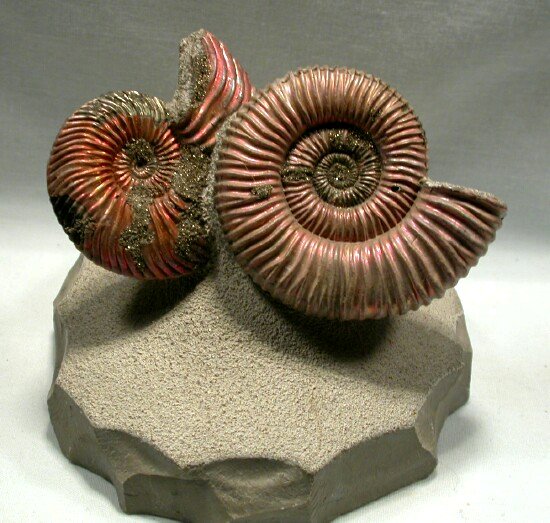Ammonites are a superb choice as they are instantly recognisable and perhaps some of the easiest to draw as well. If I said "curly-wurly fossils" it is likely that most would know what I meant. They are also extremely useful in palaeontology, being used as zone fossils in biostratigraphy and helping us reconstruct what the Earth was like in the past. For more, see here. They are often used as the symbol for palaeontological and geological groups and societies. The Earth Soc at uni hand out a golden ammonite trophy for the winner of occasional events, the losing team gets a golden coprolite.
Trilobites are just as iconic and recognisable, but not as easy to draw. Many of their uses are the same as ammonites and for a full overview I recommend Trilobite by Richard Fortey.
A brief search of "palaeontology" on google shows how iconic these two groups are. The Palaeontological Society uses both of them, with an ammonite at the top on the tab, though the main logo has a beautiful trilobite:
The Palaeobiology and Biodiversity Research Group from Bristol university seems to make use of both ammonites and dinosaurs on their web page: http://palaeo.gly.bris.ac.uk/
The Paleontology Portal makes excellent use of the
I honestly can't decide which is a better icon, both are worthy competitors.



No comments:
Post a Comment